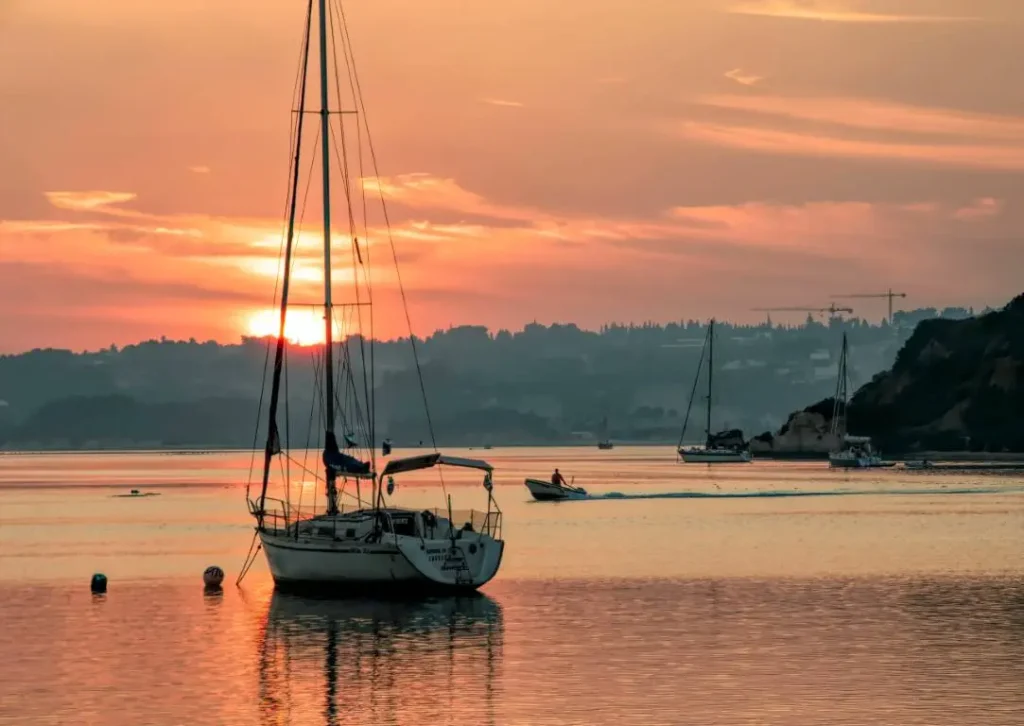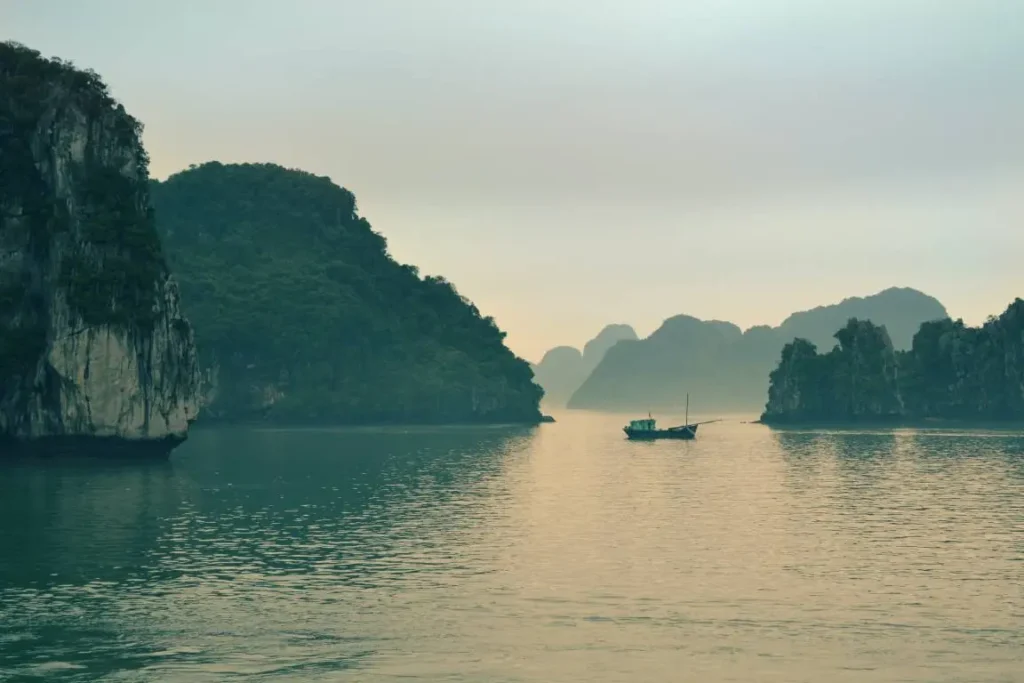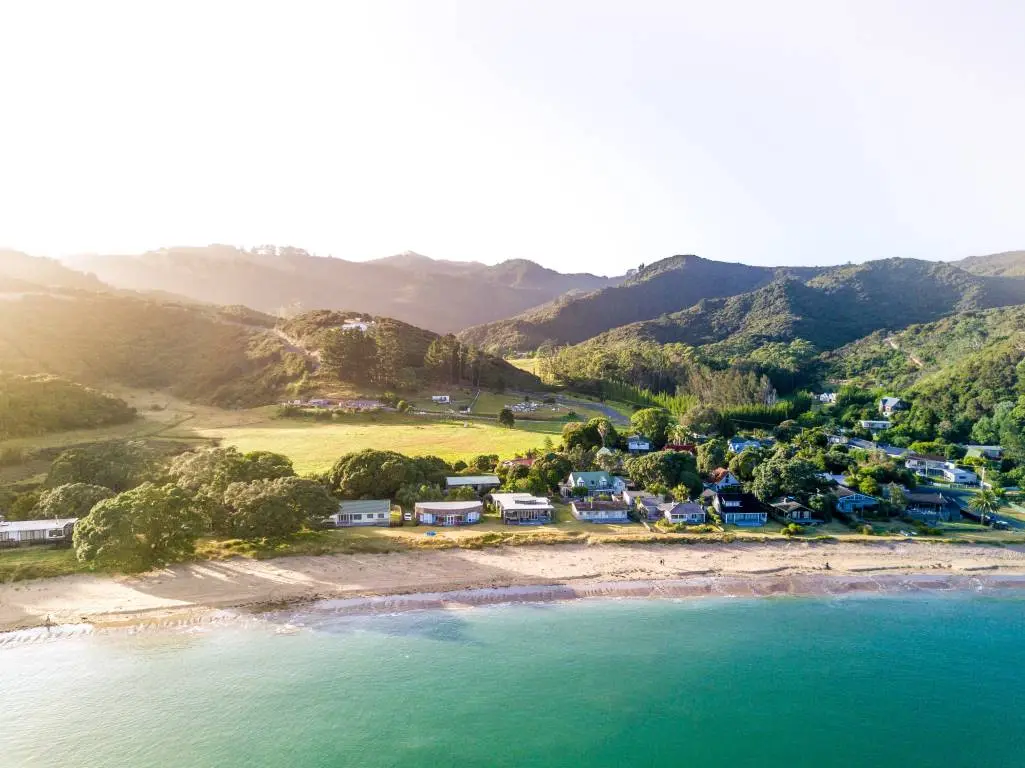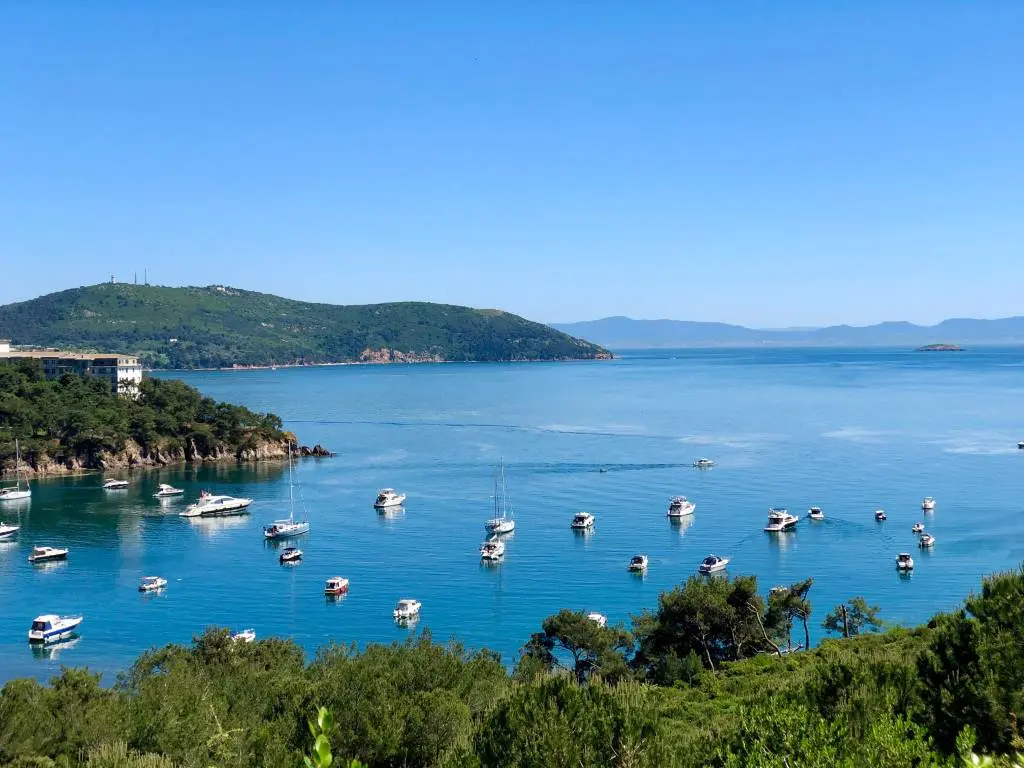Welcome to an exciting journey through time as we delve into the captivating history of the Bay of Biscay. Stretching along the western coast of France and the northern coast of Spain, this stunning body of water holds tales of adventure, piracy, and the rise and fall of the whaling industry. Join us as we uncover the fascinating stories that have shaped the region. From pirates to whaling, prepare to be amazed by the rich history that lies beneath the waves of the Bay of Biscay.
- A Legendary Maritime Playground
- Rise and Fall of Whaling
- Changing Times: Conservation and Tourism
- Sailing the Bay of Biscay: A Thrilling Adventure for Seafarers
- 5 Reasons Why the Bay of Biscay is a Must-Visit Destination for Nature Lovers
- FAQs
- 1. Were pirates in the Bay of Biscay as fearsome as the ones in the Caribbean?
- 2. What types of whales can be spotted in the Bay of Biscay today?
- 3. How did the decline of piracy contribute to the rise of whaling in the Bay of Biscay?
- 4. What are some famous pirate stories associated with the Bay of Biscay?
- 5. How did the whaling industry impact the local communities in the Bay of Biscay?
- 6. Is whaling still practiced in the Bay of Biscay today?
- Conclusion
A Legendary Maritime Playground

The Bay of Biscay has long been an important hub for maritime activities, attracting explorers, traders, and adventurers from around the world. Its strategic location and abundant resources have made it a legendary playground for sailors throughout history.
The Origins of the Name
The name “Bay of Biscay” has an intriguing history of its own. It is believed to have derived from the ancient Basque word “Bizkaia,” which refers to the Basque Country. The Basque people have inhabited the region for thousands of years and have a rich cultural heritage deeply intertwined with the bay.
Ancient Times: Early Settlements and Maritime Trade
The history of the Bay of Biscay can be traced back to ancient times when early human settlements began to emerge along its shores. These settlements relied heavily on maritime trade and fishing as a means of sustenance and prosperity.
The Phoenicians: Pioneers of Trade
The Phoenicians, renowned seafarers of the ancient world, were among the first to recognize the economic potential of the Bay of Biscay. They established trading outposts along the coast, bringing goods from far-flung lands and introducing new ideas and technologies to the region.
Roman Influence and the Decline of Piracy
During the Roman Empire, the Bay of Biscay became an important route for the transportation of goods and troops. The Romans constructed ports and fortifications along the coast, further solidifying the region’s significance.
With the rise of the Roman Empire, piracy in the bay began to decline. The Romans implemented strict measures to combat piracy, increasing the safety of maritime trade routes and ensuring the prosperity of the region.
Medieval Times: The Era of Pirates
As the Roman Empire crumbled, a new era of piracy emerged in the Bay of Biscay. The region became infested with pirates who took advantage of the weakened central authority to plunder passing ships and coastal settlements.
The Basque Pirates: Masters of the Bay

Among the most notorious pirates of the Bay of Biscay were the Basques. These skilled seafarers capitalized on their knowledge of the treacherous waters and launched daring attacks on unsuspecting vessels.
The Basque pirates developed advanced shipbuilding techniques and employed superior navigational skills, enabling them to outwit and overpower their opponents. Their reputation spread far and wide, striking fear into the hearts of sailors who ventured into the bay.
Source: https://en.wikipedia.org/wiki/Michel_le_Basque
The Golden Age of Piracy
During the 17th and 18th centuries, the Bay of Biscay experienced its own golden age of piracy. Legendary pirates such as Jean Lafitte and William Kidd roamed the waters, plundering merchant ships and amassing vast fortunes.
These pirates not only terrorized the seas but also left an indelible mark on popular culture, becoming the subjects of countless tales and legends that continue to captivate our imaginations.
Rise and Fall of Whaling

As the era of piracy waned, a new industry began to flourish in the Bay of Biscay—the whaling industry. Whaling ships set sail from ports along the coast, venturing into the deep waters in search of these majestic creatures.
The Whaling Boom
During the 18th and 19th centuries, whaling experienced a significant boom in the Bay of Biscay. The rich feeding grounds and migratory patterns of various whale species made the bay an ideal location for whalers to hunt and harvest these magnificent creatures.
Whaling ships, equipped with harpoons and processing facilities, embarked on perilous journeys lasting several months. The pursuit of whales was a challenging endeavor, requiring skill, patience, and a deep understanding of the ocean’s dynamics.
The Impact of Whaling

The whaling industry brought both economic prosperity and environmental consequences to the Bay of Biscay. Whaling ports and communities thrived as the demand for whale products, such as oil and whalebone, soared.
However, the relentless hunting of whales took a toll on their populations. Some species, such as the North Atlantic right whale, were driven to the brink of extinction. The ecological balance of the bay was disrupted, and the consequences of this overexploitation continue to be felt today.
Source: https://www.researchgate.net/Old-whaling-in-the-Bay-of-Biscay
Changing Times: Conservation and Tourism

In the 20th century, the outlook on whaling shifted dramatically. The awareness of the ecological importance of whales grew, leading to international efforts to protect these magnificent creatures.
Today, the Bay of Biscay has become a haven for whale watching and marine conservation. Tourists flock to the region to catch a glimpse of these majestic creatures in their natural habitat, contributing to the local economy while promoting conservation efforts.
Sailing the Bay of Biscay: A Thrilling Adventure for Seafarers

If you are looking for a challenge and a thrill, sailing the Bay of Biscay might be the perfect option for you. The Bay of Biscay is a large body of water that lies between France and Spain, and is known for its rough seas and strong winds. It is not a place for the faint-hearted, but for those who love to test their skills and endurance against nature.
Sailing the Bay of Biscay requires careful planning and preparation. You need to have a seaworthy boat, a competent crew, and a good knowledge of the weather and tides. You also need to be aware of the hazards and risks involved, such as storms, fog, currents, and shipping traffic. The Bay of Biscay is not a place to take lightly, but to respect and enjoy.
One of the best ways to sail the Bay of Biscay is to join a sailing rally or flotilla. This way, you can benefit from the support and guidance of experienced sailors, as well as the camaraderie and fun of sailing with other like-minded adventurers. You can also choose from different routes and destinations, depending on your preferences and abilities.
Some of the most popular places to visit while sailing the Bay of Biscay are:
- La Rochelle: A historic port city in France, with a beautiful old town and a lively marina.
- Bilbao: A modern and vibrant city in Spain, famous for its art and culture, especially the Guggenheim Museum.
- Santander: A charming seaside town in Spain, with a sandy beach and a royal palace.
- La Coruña: A bustling city in Spain, with a rich maritime heritage and a stunning lighthouse.
- Brest: A naval base and a cultural center in France, with a spectacular harbor and a maritime museum.
Sailing the Bay of Biscay is not for everyone, but for those who dare, it is an unforgettable experience. It is a way to challenge yourself, to connect with nature, and to discover new places and cultures. It is a thrilling adventure for seafarers.
5 Reasons Why the Bay of Biscay is a Must-Visit Destination for Nature Lovers

If you are looking for a place to enjoy the beauty and diversity of nature, you should consider visiting the Bay of Biscay. This wide gulf of the North Atlantic Ocean is located along the western coast of France and the northern coast of Spain, and has an area of about 86,000 square miles. Here are five reasons why the Bay of Biscay is a must-visit destination for nature lovers.
1. The bay of Biscay has a rich marine life.
The bay is home to many species of fish, such as herring, anchovy, sardine, and mackerel, as well as scaleless dragonfish that live in the deep waters. You can also spot various marine mammals, such as dolphins, porpoises, whales, and seals, as well as seabirds, such as gannets and shearwaters. The bay is also a nursery for many marine organisms, thanks to its shallow waters and lush seagrass beds.
2. The bay of Biscay has a diverse geography.
The bay has a triangular shape and a varied topography, ranging from shallow continental shelf to deep oceanic basin. The average depth of the bay is 1,744 meters and the maximum depth is 4,735 meters. The bay is bounded by the rugged coastlines of France and Spain, which offer stunning views and scenic landscapes. You can also explore the islands and archipelagos that dot the bay, such as the Île d’Oléron, the Île de Ré, and the Cíes Islands.
3. The bay has a fascinating history.
The bay has been a witness to many historical events and naval battles, such as the Battle of Biscay in 1592 between Spain and England, the Biscay campaign in 1795 between France and Britain, and the Battle of the Bay of Biscay in 1943 between Germany and Britain during World War II. You can learn more about these events and see some of the shipwrecks that lie on the seabed. You can also visit some of the historical towns and cities that border the bay, such as Biarritz, Bordeaux, Santander, and Bilbao.
4. The bay has a vibrant culture.

The bay is influenced by the cultures of France and Spain, as well as by the Basque people who live on both sides of the border. You can experience the different languages, cuisines, music, art, and traditions that make this region unique and colorful. You can also enjoy some of the festivals and events that take place in the bay area, such as the Fêtes de Bayonne in France or the Semana Grande in Spain.
5. The bay has a lot of activities to offer.
Whether you are looking for adventure or relaxation, you will find something to suit your taste in the Bay of Biscay. You can enjoy various water sports, such as surfing, sailing, kayaking, diving, or fishing. You can also go hiking, biking, golfing, or horse riding on land. You can also relax on some of the beautiful beaches that line the bay shore or visit some of the natural parks and reserves that protect its wildlife.
The Bay of Biscay is a place where you can discover nature in all its forms and glory. It is a place where you can immerse yourself in history and culture. It is a place where you can have fun and unwind. It is a place that you should not miss.
Also Read How to Plan the Perfect Road Trip Along the Bay of Biscay Coastline
FAQs
1. Were pirates in the Bay of Biscay as fearsome as the ones in the Caribbean?
While the Caribbean is often associated with the notorious pirates of the Golden Age, the pirates of the Bay of Biscay were no less formidable. The Basque pirates, in particular, were known for their expertise in navigating the treacherous waters and launching daring attacks on unsuspecting ships. Their reputation instilled fear in the hearts of sailors, making them a force to be reckoned with.
2. What types of whales can be spotted in the Bay of Biscay today?
The Bay of Biscay is home to several whale species, including fin whales, sperm whales, pilot whales, and even the occasional humpback whale. These magnificent creatures migrate through the bay, providing a thrilling spectacle for whale watchers.
3. How did the decline of piracy contribute to the rise of whaling in the Bay of Biscay?
As piracy gradually declined in the Bay of Biscay, maritime trade routes became safer and more accessible. This opened up opportunities for the whaling industry to flourish, as ships could venture into the bay without the constant threat of pirate attacks. The decline of piracy indirectly facilitated the growth of the whaling industry in the region.
4. What are some famous pirate stories associated with the Bay of Biscay?
One of the most famous pirate stories from the Bay of Biscay is that of the Basque pirate, Francis Drake. He was known for his daring exploits, including raids on Spanish treasure ships and coastal towns. Another notable pirate is Jean Lafitte, who operated in the Gulf of Mexico and is believed to have had connections to pirates in the Bay of Biscay.
5. How did the whaling industry impact the local communities in the Bay of Biscay?
The whaling industry brought economic prosperity to the local communities in the Bay of Biscay. Whaling ports such as Biarritz, Saint-Jean-de-Luz, and Bilbao experienced a surge in economic activity as the industry thrived. The processing and export of whale products, such as oil and whalebone, created jobs and stimulated local trade.
The wealth generated from whaling contributed to the development of infrastructure, including the construction of ports, warehouses, and processing facilities. These investments further bolstered the growth of the maritime industry and supported the livelihoods of those living in the coastal communities.
6. Is whaling still practiced in the Bay of Biscay today?
No, commercial whaling is no longer practiced in the Bay of Biscay. The decline of whale populations and the growing awareness of their ecological importance led to international regulations and agreements to protect these magnificent creatures. The focus has shifted from hunting whales to conservation and sustainable tourism, allowing visitors to witness the beauty of whales in their natural habitat without causing harm to these vulnerable species.
Conclusion
The Bay of Biscay holds a captivating history that encompasses tales of piracy and the rise and fall of the whaling industry. From the fearless Basque pirates who ruled the seas to the bustling whaling ports that once thrived along the coast, this region has witnessed remarkable stories that shaped its identity.
Today, the Bay of Biscay stands as a testament to the power of conservation and the resilience of nature. It has become a sanctuary for marine life, drawing tourists from around the world to witness the awe-inspiring sight of whales in their natural habitat.
As we uncover the history of the Bay of Biscay, let us remember the importance of preserving its rich heritage and safeguarding its natural wonders for generations to come.
You may also like,
- Bay of Biscay
- Mandalay Bay Pool is a must visit place in LA – Las Vegas
- Bungo Straits: Unlocking the Beauty and Mystique of this Scenic Passage

